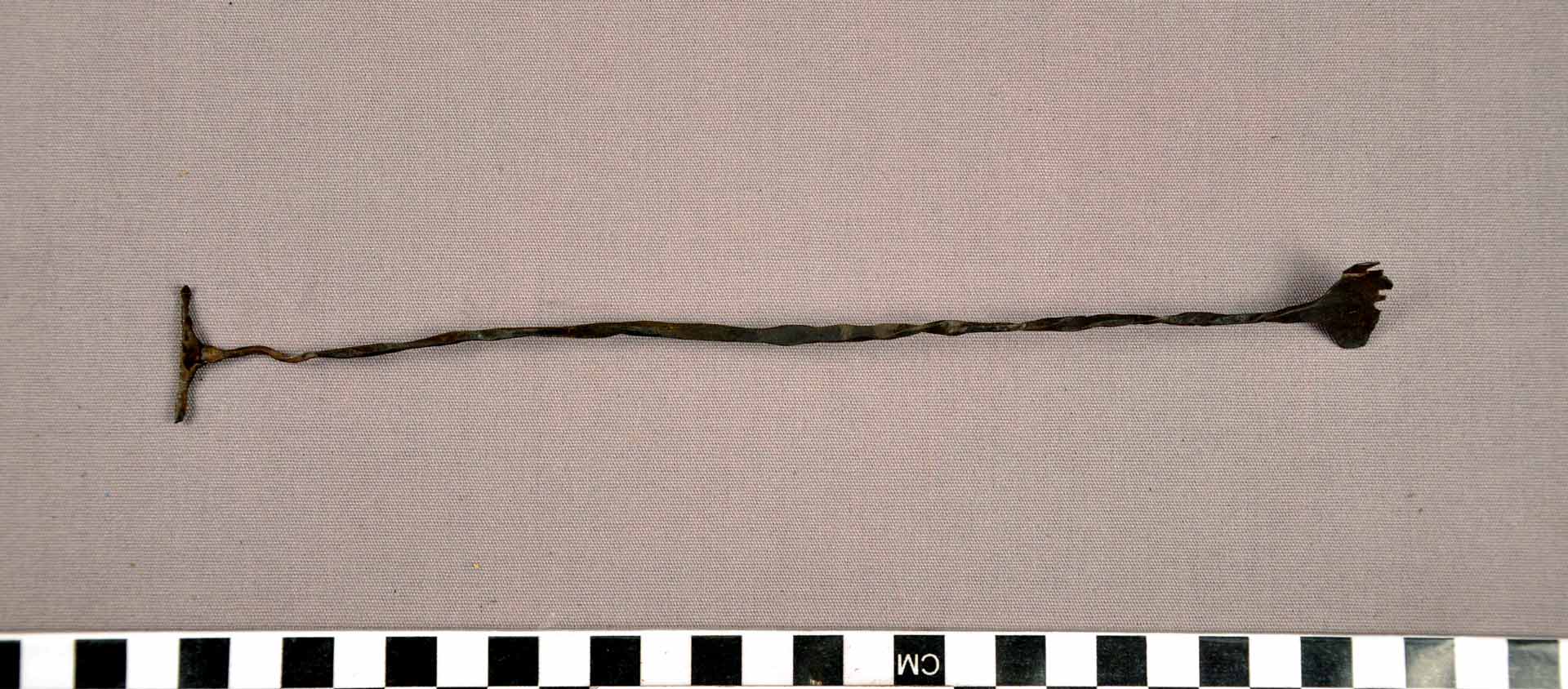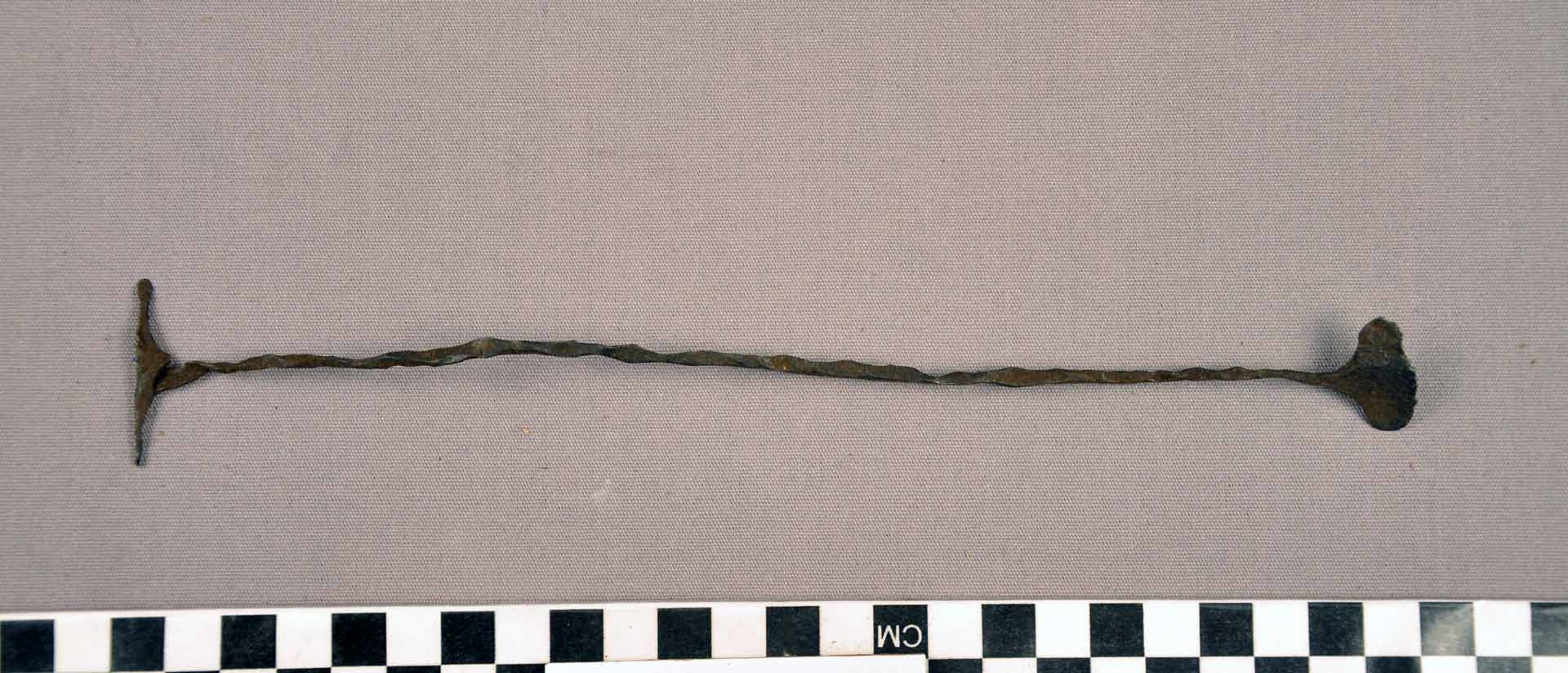
Featured Object: Kissi Penny
- Post Date: 3/22/2019
- Author: Jackie Masiunas, student writer
- Reading Time: 3 minute read
During the late 19th century, Kissi pennies were minted from the natural iron ore located in what is known today as Liberia, Serra Leone, and Guinea. Referred to by the Kissi people as Kilindi, the Europeans who colonized the region referred to them as Kissi pennies or Kissi money. During this time, Kissi pennies began to circulate in the African regions along with European and American paper money.
-
 Kissi Penny 2013.05.0758
Kissi Penny 2013.05.0758
Kissi pennies are thin, twisted rods of high-quality iron with one end molded into the shape of a “T” called niling (ear) and the other end shaped into a flat spatula-like form called kodo (foot). One of the possible reasons for its unusual shape could be because it is almost impossible to alter or shave the penny without the tampering being noticeable. Due to the unusual human-like shape, the Kissi people believed the pennies held souls. Rods vary in size from about 6’’ to 18’’ with longer ones being of higher value. Generally, Kissi pennies were fastened into bundles of twenty rods as a single Kissi penny was not worth much. There are different proposed explanations about why Kissi believed this currency held souls: the shape may resemble an abstract human form, and the iron-working process contains symbolic meanings. If a Kissi penny were to break, the loss of the soul devalued the penny. Only the Zoe, a trained blacksmith, could repair it. For a fee, the Zoe would rejoin the broken penny to restore the missing soul.
-
 Kissi Penny 2013.05.0759
Kissi Penny 2013.05.0759
During colonization of African nations, France and Great Britain began to abolish the use of Kissi pennies in favor of their own national currency. Due to these policies, Kissi pennies are now usually limited to ritual ceremonies or decorating the graves of old warriors.
-
 Kissi Penny 2013.05.0761
Kissi Penny 2013.05.0761
-
- Share:
- Subscribe to Newletter
- Giving